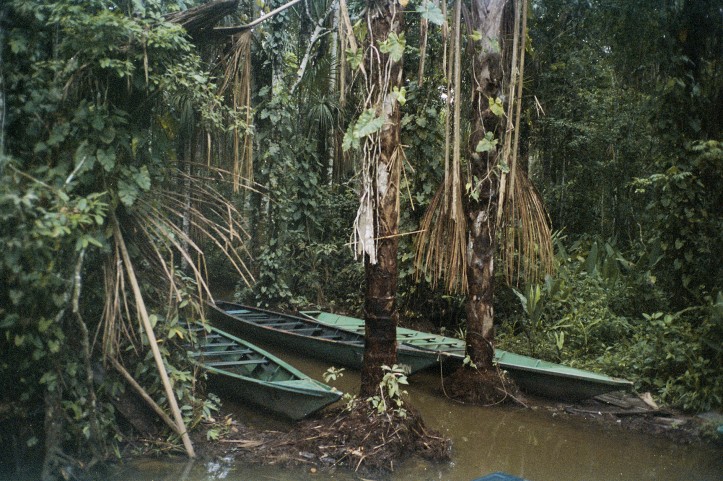
In the southernmost part of Peru, pristine Amazon forests are turning into a toxic desert. Thousands of prospectors go there to collect gold with their bare hands.
The fog is slowly gathering at the lakeshore, near the thick wall of centuries-old trees. There’s still a good hour until dusk, but something suddenly changes. There’s a commotion on the water. A family of coypu is hunting piranhas. They’re in a hurry, swimming together, snorting, holding pale yellow fish in their clenched teeth. They jump out on fallen tree trunks and eat there, crunching and smacking. Then, they play in shallow waters – squealing, biting each other gently and cuddling in an early-evening display of tenderness.
On the other side of the lake, bright green tree crowns sway with an invisible force. Two friendly groups – a troop of larger, brown capuchins and their smaller, yellowish cousins – head to their sleeping quarters while finishing dinner. There’s about 200 monkeys in total. The faster ones grab palm fruit and figs, the delicacies oozing white juice. The last to go are mothers with their babies. The young cling to their mamas, fast asleep, while the females tread cautiously, choosing the best branches and calculating each jump with care.
The selva forest is steaming a little. White wisps thicken above the treetops, rising and becoming one with the clouds. The skies take a dramatic turn, filled with movement from tumbling gas shapes, and burning with an orange glow that fades into inky blue at the edges.
Now, the moon takes the scene, and the roles switch. No more colours. All that is left below are black tree crowns, the granite water surface, and moonlight above, silvery and luminous. The night is falling bright and quiet on the lake. Caimans are already lying low in the shallow waters. They wait, motionless, for their prey.
After dusk, the tropical forest changes its soundtrack. It becomes quieter and louder at the same time. Millions of insects play the theme tune while large nocturnal animals add their thuds, rustles and hoots. The plants don’t remain silent either. Seven-centuries-old trees shed heavy leaves; fruit hits the ground. Branches creak, sometimes a crack or a howl cuts through the air. Just before dawn, another change of mood: seconds of silence, followed by troops of rusty-furred howler monkeys beginning their chorus of howls; marking their territory with sound. The descendants of ancient birds screech over the crystal-clear water surface. When you take a handful of water, it brightens the skin.
Here, in the Tambopata National Reserve in south-east Peru, life pulsates around Lake Sandoval in myriad forms and shapes. Butterflies alone appear in a thousand varieties. There are over 100 species of mammals and 600 species of birds, not to mention hundreds of thousands of various plants and trees whose root systems are larger than a cargo truck. It’s the essence of the Amazonian magic and the abundance of nature. One of the richest places on the planet (and one of the most expensive, too). It is, after all, growing on pure gold.

The boy parks on the roadside and kills the engine. He pushes closer on his motorbike, propping his rubber-boot-clad feet on the dusty yellow ground. The boy is wearing his grey hoodie in a strange fashion, back to front; he has pulled the sleeves onto his arms, protecting them from the burning sun.
The boy’s gaze is vigilant, primal. He barely lifts his eyelids, keeping his chin low. He’s afraid of something. In all this racket, the heat and the cacophony of horn toots, he asks, almost soundlessly, where we want to go. Jacek, my guide and interpreter – and right now, my suspected culprit – approaches the boy. A conversation slowly begins. We want to go to Santa Rosita, a mining zone that two years ago was closed down by the army and the police, who blew up all the installations that operated in the strict nature reserve area. We know that the goldmine was restored, and that some of its former employees work there again.
I look around with false nonchalance, as if this wasn’t strange at all – the sight of us, two white foreigners roaming around the darkest corner of Peru. The








